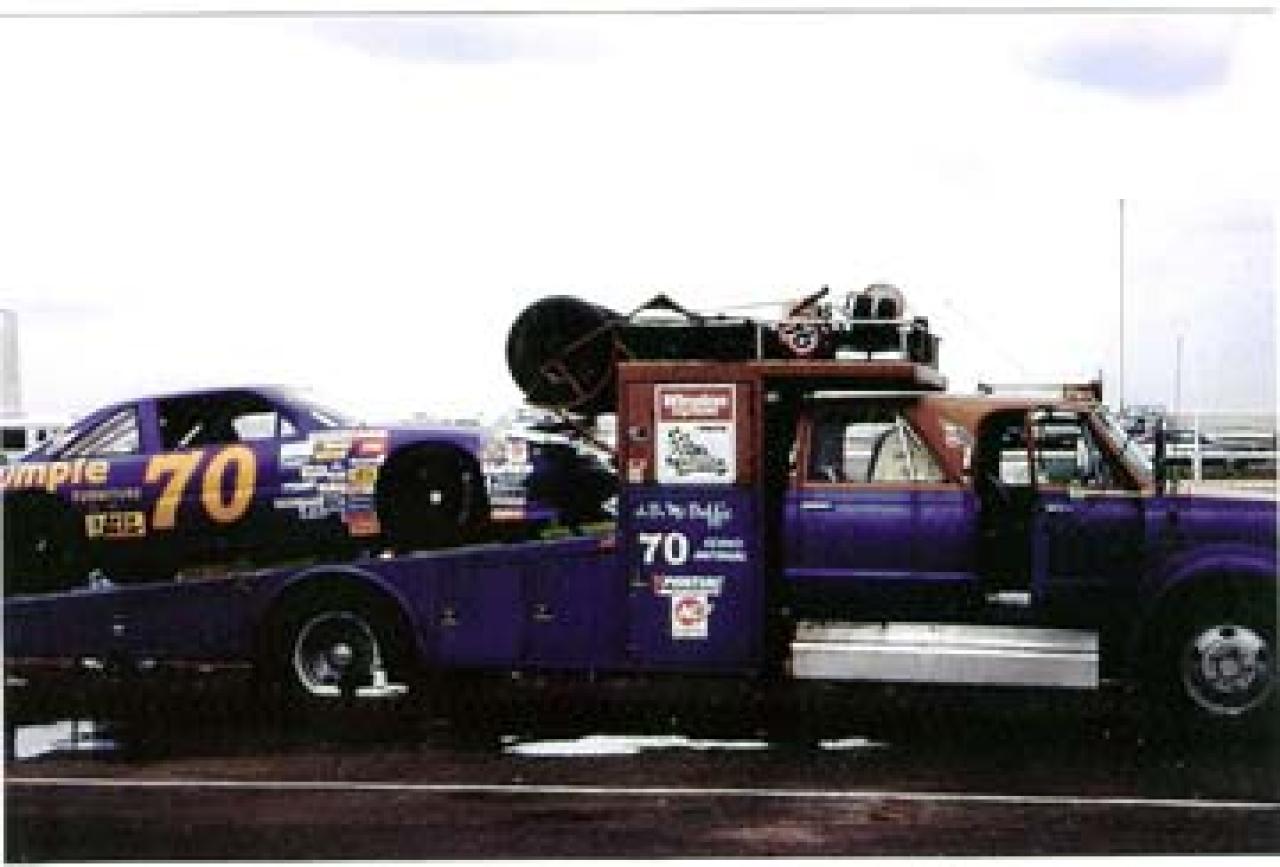Ralph and Dale
As NASCAR Changed See Script

Such resourcefulness was indispensable for J.D., and it indicates the mountains he conquered to remain a part of the Winston Cup Series. Racing was seldom easy for J.D. McDuffie and by the late 1980s it was becoming even more difficult, if not downright impossible. NASCAR was changing rapidly. The independent drivers --like the dirt tracks NASCAR’s top level had once called home—were little more than musty relics consigned to the corner of racing’s basement.
To complicate matters, J.D. suffered serious burns from a fiery crash during a qualifying race for the 1988 Daytona 500. Contact with another car sent J.D. into the outside wall, rupturing the oil cooler. The ensuing fire engulfed the car as it slid to a halt on the track’s apron. Fortunately, he was able to escape the inferno under his own power and was taken to the hospital with second and third degree burns, especially to his hands.
"Someone had a prize racing souvenir. J.D. got the scars...."
The fire was so hot that it melted the steering wheel in McDuffie’s car. Worse still, someone had taken J.D.’s brand new pair of fireproof gloves from his driver’s seat the very morning of the 125-mile qualifier. He raced anyway. Somewhere, someone had a prize racing souvenir. J.D. got the scars.
During the Daytona 500 a few days later J.D. spoke to the broadcast crew from his hospital room. “All I ever done is race, it’s all I know,” he said. “I still love to do it and I’ll be back. This ain’t going to get me down.”
The crash at Turn 5
J.D. raced only 17 times between 1988 and 1990. By the time he arrived at Watkins Glen, N.Y. , in August of 1991 McDuffie had made the field in only four of the season’s 17 events. But the night before the Budweiser at the Glen, J.D.’s frustration turned to jubilation. He won an all-star race at the Shangri-La Speedway in Owego, N.Y. Less than 24-hours later, on August 11, John Delphus McDuffie lay dead in the driver’s seat following a violent crash at Watkins Glen International’s dangerous Turn 5.
Ricky Rudd, perhaps Winston Cup’s best road racer at the time, and Harry Gant had wiped out in the same turn during the practice session a few days earlier. Tommy Kendall had also suffered severe injuries in Turn 5 during a sports car event the previous June.
Opinions vary on what caused that fateful accident. The news accounts say that the right front wheel had broken loose, which is plainly evident in video of the wreck. Other observers claim that contact with another car started the incident, or that brake failure or a stuck accelerator was the culprit. Whatever the cause, McDuffie had died instantly of brain injuries after his Pontiac slammed into a tire barrier, flipped, and landed on its roof.
The L.C. Whitford Company of Wellsville, N.Y., sponsored J.D.’s ride for the Watkins Glen race. It was the company’s first and only foray into Winston Cup racing, a one-time deal made at the request of a Whitford employee who had previously worked on McDuffie’s pit crew. Company president Brad Whitford never had the chance to meet McDuffie and wasn’t even at the race. But, in a chilling quirk of fate, he turned on the television just in time to see a replay that he said, “made me sick to my stomach.”
Sanford’s hometown hero
It’s been said that a person’s worth is undervalued until they’re gone. J.D. received little recognition during his career, but it seemed everyone understood the void he left behind when he died. “J.D. was just a humble man that everyone liked,” said Tommy Bridges, who conducted J.D.’s wake for the Bridges-Cameron Funeral Home. In fact, the number of mourners who paid tribute to Sanford’s favorite son was among the largest he has witnessed during his 50 years in the field.
Race fans transformed Sanford, N.C., into an RV campground that resembled the race day infield at Charlotte Motor Speedway. News crews rolled film. Winston Cup drivers and car owners—out of respect for their fallen competitor—spurned interview requests as the